No products in the cart.
NEWS
Your Guide to Cultivating Thriving Cherry Trees
Growing cherry trees, whether for their abundant blossoms or delicious fruit, is a rewarding endeavor that adds beauty and bounty to any landscape. From selecting the right variety to mastering care techniques and managing common challenges, a little expert knowledge can go a long way in ensuring a successful cherry harvest. This comprehensive guide from Biogarden offers insights for both novice and experienced gardeners looking to cultivate these cherished fruit trees.
Getting Started with Cherry Trees
Embarking on your cherry tree journey begins with choosing the right location and planting with care. Cherry trees thrive in well-drained soil and require plenty of sunlight, ideally at least 6-8 hours per day.
Selecting a site protected from harsh winds can also be beneficial, especially for younger trees. Proper soil preparation is crucial; incorporating organic matter can improve drainage and fertility, setting a strong foundation for healthy growth.
Essential Cherry Tree Care Practices
Consistent care is key to a productive cherry tree. This includes mindful watering, appropriate fertilization, strategic pruning, and understanding the specific chilling requirements of your chosen variety.
Watering needs vary depending on climate and soil type, but young trees generally require regular moisture to establish their root systems. Mature trees are more drought-tolerant but will benefit from irrigation during dry spells, particularly while fruit is developing.
Fertilization supports vigorous growth and fruit production. Experts at Biogarden recommend soil testing to determine specific nutrient needs, but a balanced fertilizer applied in early spring is often beneficial. Avoid over-fertilizing, which can lead to excessive leafy growth at the expense of fruit.
Pruning shapes the tree, improves air circulation, removes damaged or diseased branches, and encourages better fruit set. The best time to prune cherry trees is typically in late winter or early spring while the tree is dormant, or immediately after harvest in summer.
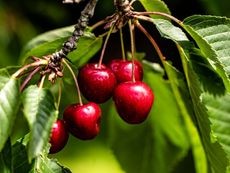 A young cherry tree in blossom against a blue sky
A young cherry tree in blossom against a blue sky
One unique requirement for successful fruit production in most cherry varieties is accumulated “chill hours.” This refers to the number of hours the tree needs to spend at temperatures between 32°F (0°C) and 45°F (7°C) during the dormant season. Different varieties have different chill hour requirements, so selecting a variety suited to your local climate is essential for flowering and fruiting.
Propagating Cherry Trees
Expanding your cherry tree collection can be achieved through propagation. While growing from seed is possible and can be a fun experiment, propagation from cuttings is often the easiest and most reliable method for producing trees true to the parent variety.
To grow cherries from seed, pits need a period of cold stratification to germinate. This mimics natural winter conditions. After stratification, seeds can be planted in a controlled environment before transplanting seedlings outdoors. However, trees grown from seed may not produce fruit identical to the parent tree and can take many years to bear.
Propagating from cuttings involves taking a section of a healthy branch and encouraging it to root. This method ensures the new tree will have the same characteristics as the tree from which the cutting was taken. Using rooting hormones and providing suitable soil and moisture conditions can significantly increase the success rate of cuttings.
 Cherry tree cutting ready for propagation
Cherry tree cutting ready for propagation
Exploring Popular Cherry Tree Varieties
The world of cherry trees offers a delightful diversity, broadly categorized into sweet and sour (tart) varieties. Each offers unique flavors, uses, and growth habits.
Sweet Cherries: Often enjoyed fresh, sweet cherries are known for their rich flavor and firm texture. Popular sweet varieties mentioned include:
- Bing: One of the most widely recognized and commercially grown sweet cherries, known for its large, dark red to black fruit and sweet taste. Careful handling is needed as Bing cherries can be prone to splitting.
- Sunburst: Matures mid-season, producing large, dark-red to black fruit. This variety is noted for having better resistance to splitting compared to some other sweet cherries.
- Emperor Francis: Juicy, super sweet cherries that are plump and delicious, often used for fresh eating or making homemade maraschinos, jams, and jellies.
- Vandalay: A beautiful dark red, very sweet cherry variety.
- Cristalina (also known as ‘Sumnue’): A hybrid of Van and Star cherries, bearing dark red, glossy, heart-shaped fruit.
- Coral Champagne: Prized for its flavor and appearance, making it a popular choice for orchards.
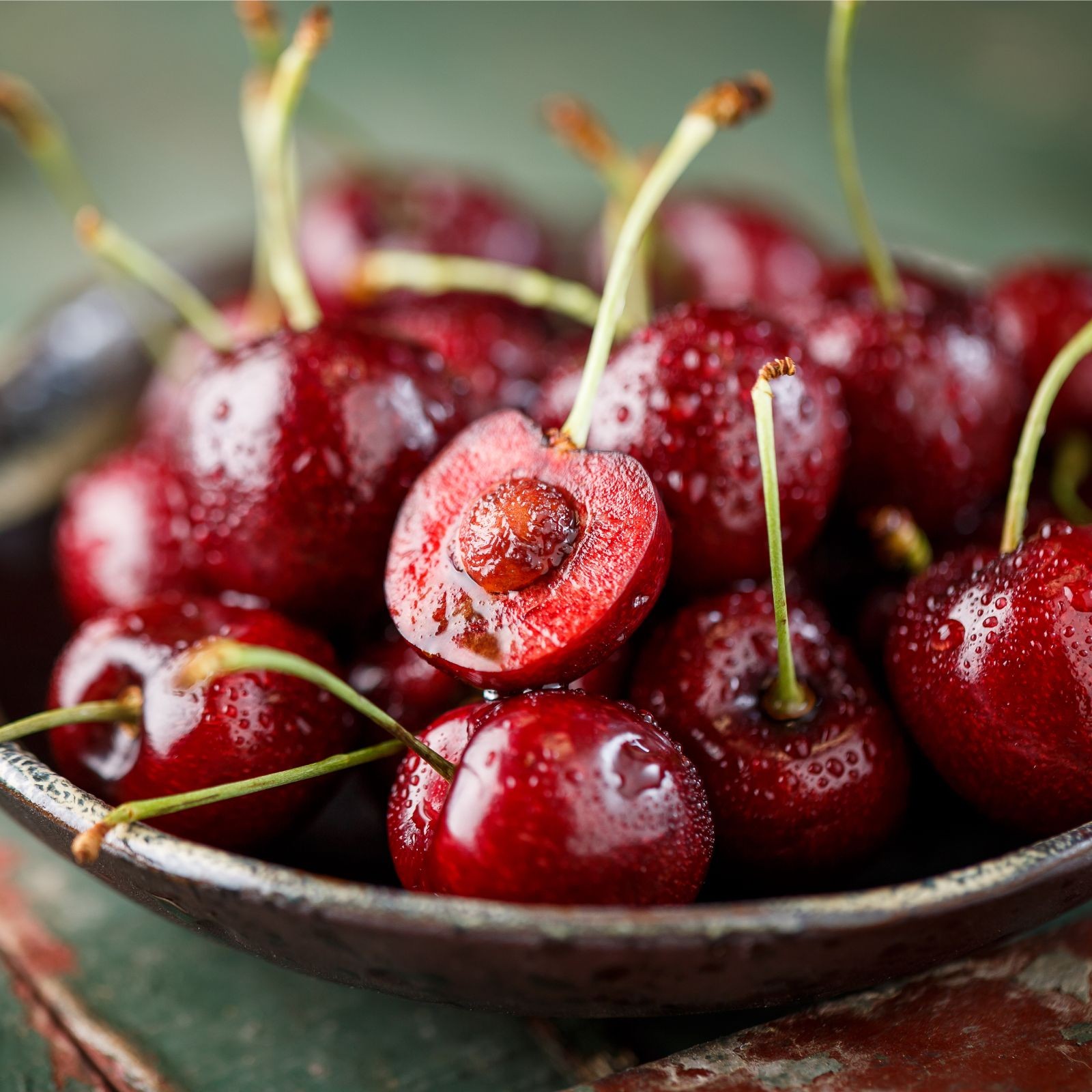 A bowl of cherries with a cherry seed ready for propagation
A bowl of cherries with a cherry seed ready for propagation
Sour Cherries: Ideal for cooking, baking, jams, and preserves due to their bright, tart flavor.
- English Morello: A classic sour cherry variety perfect for pies, tarts, and even making liqueurs. These trees tend to be more compact than many sweet cherry varieties.
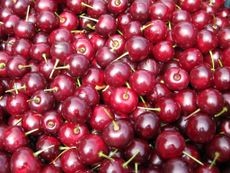 Morello cherries, perfect for culinary uses
Morello cherries, perfect for culinary uses
Choosing the right variety depends on your intended use for the fruit, your climate zone’s chill hours, and whether you have suitable pollinators (some varieties require cross-pollination).
Recognizing & Managing Common Cherry Tree Problems
Like all fruit trees, cherry trees can be susceptible to pests and diseases. Early identification and proactive management are crucial to protecting your crop and the health of your tree. Biogarden emphasizes supporting plant health from the ground up to increase resilience.
Common issues include various fungal and viral diseases:
- Cherry Leaf Spot: Characterized by small purple or red spots on the leaves, which may eventually turn brown and drop prematurely. Severe leaf spot can weaken the tree. Fungicides and good sanitation practices (removing fallen leaves) are key to management.
- Rusty Mottle Disease: A group of viral diseases causing symptoms like mottled yellow leaves and necrotic lesions. Management focuses on preventing spread, as there is no cure for infected trees.
- Necrotic Rusty Mottle Virus: Often presents with mottled yellow leaves and necrotic lesions. While there’s no cure, identifying and removing infected trees can help slow its spread.
- Cherry Rugose Mosaic Virus: Unfortunately untreatable. Symptoms can include distorted leaves and reduced fruit size. Removing diseased trees is necessary to prevent the virus from spreading to healthy trees.
- Cherry Vein Clearing and Cherry Crinkle: These are considered different names for a virus-like condition that can severely impact fruit production. Management involves removing affected trees.
- Cherry Witches’ Broom: Causes abnormal, dense clusters of shoots resembling a broom. It can be caused by various pathogens. Pruning out the affected branches is the primary method of control.
- Cherry Tree Crown Gall: Identified by abnormal, tumor-like growths on the trunk or roots. This bacterial disease can weaken the tree. Management often involves carefully removing galls and ensuring proper planting site selection to avoid wounding the root system.
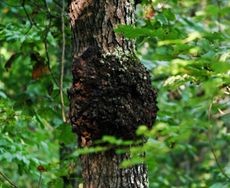 Abnormal crown gall growth on a cherry tree
Abnormal crown gall growth on a cherry tree
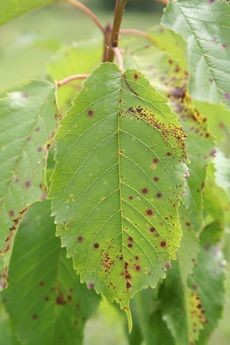 Cherry leaves showing symptoms of leaf spot disease
Cherry leaves showing symptoms of leaf spot disease
Maintaining tree vigor through proper care, including balanced nutrition with support from quality soil products, can help trees naturally resist some issues. Pruning to improve air circulation can also deter fungal diseases.
Harvesting Your Cherry Crop
Knowing when and how to harvest your cherries ensures you enjoy them at their peak flavor. Cherries are typically ready for harvest in late spring to mid-summer, depending on the variety and climate.
The best indicator of ripeness is color – cherries deepen in color as they mature. Sweet cherries should be firm and fully colored, while sour cherries are picked when they are bright red and slightly soft.
Harvesting should be done carefully to avoid damaging the spurs (the short branches that bear fruit). It’s best to pick cherries with their stems attached, gently pulling clusters from the tree or using small clippers. This helps the fruit last longer.
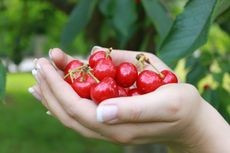 Hands holding a harvest of ripe red cherries
Hands holding a harvest of ripe red cherries
Conclusion
Growing cherry trees offers immense satisfaction, from witnessing their beautiful springtime blossoms to enjoying the sweet or tart fruits of your labor. By understanding the basics of planting, providing consistent care, choosing suitable varieties, and being prepared to manage potential issues, you can cultivate healthy, productive cherry trees in your own garden.
Whether you’re dreaming of homemade cherry pies, fresh snacking cherries, or simply the aesthetic beauty of a mature tree, the journey of growing cherries is a rewarding one. Explore how quality gardening support from Biogarden can help you achieve your cherry tree growing goals and enjoy the delicious results!



